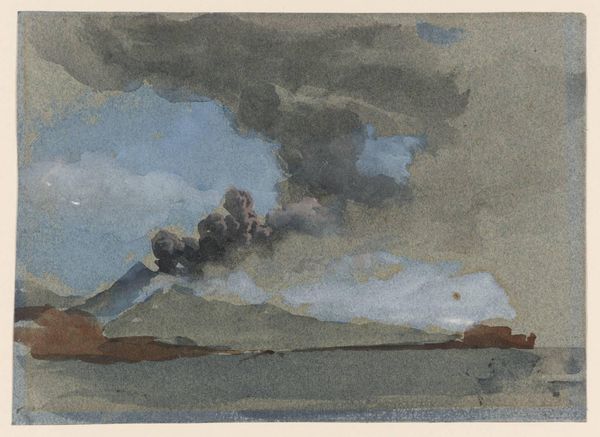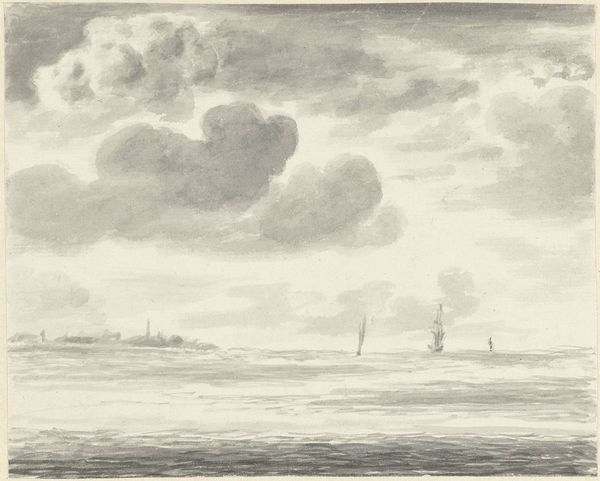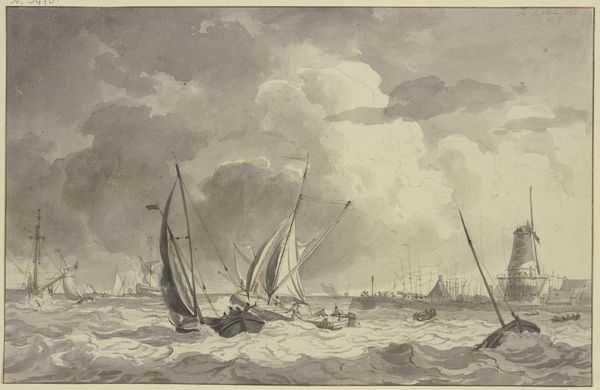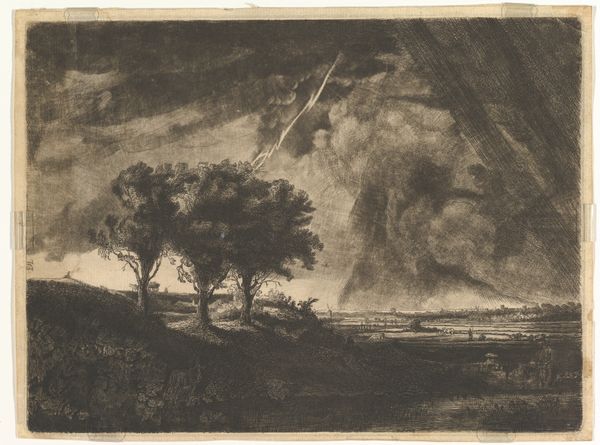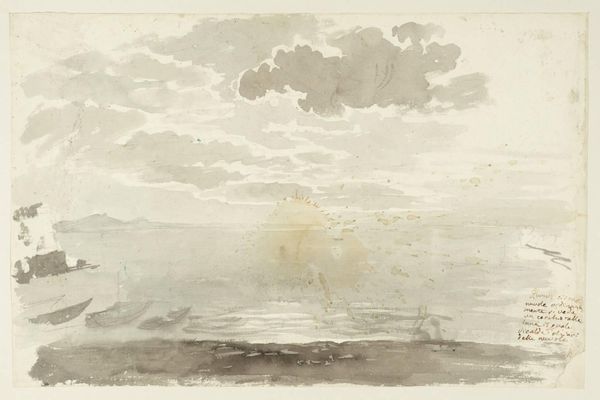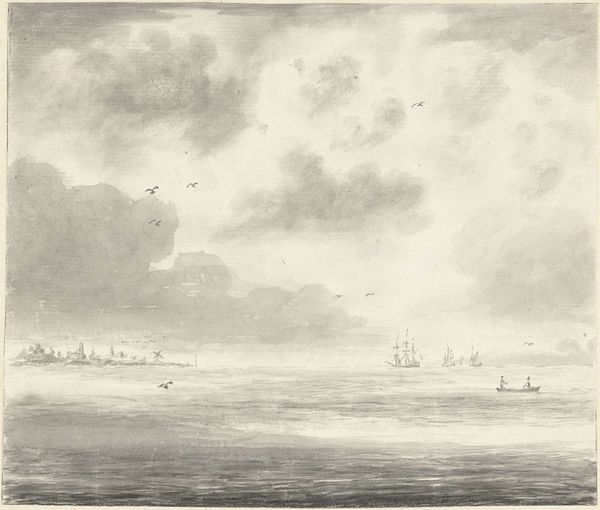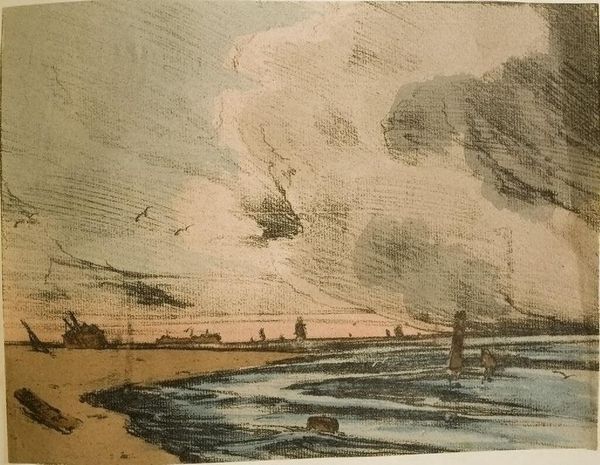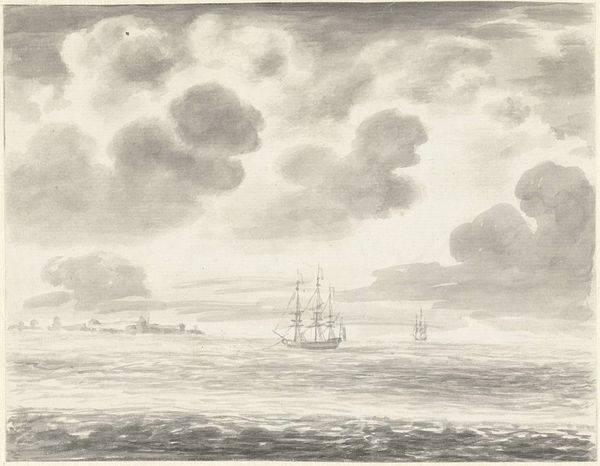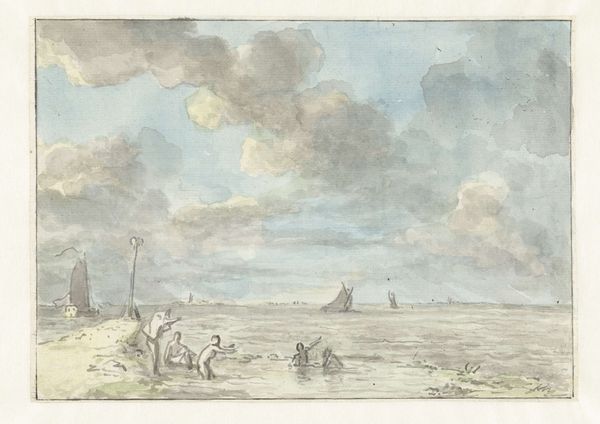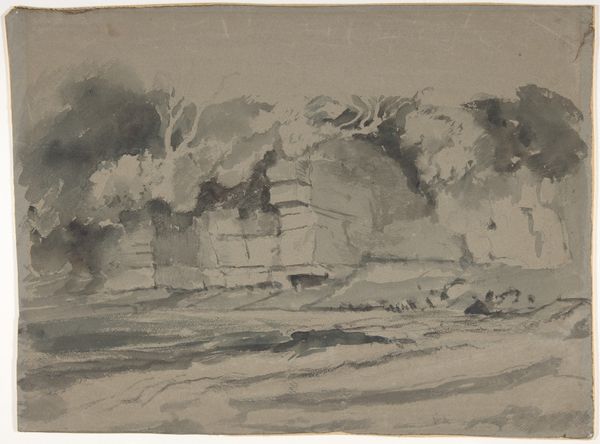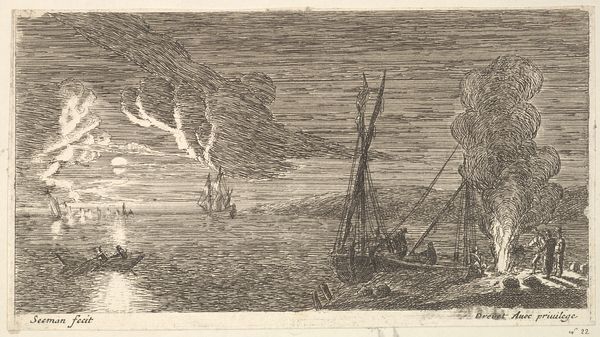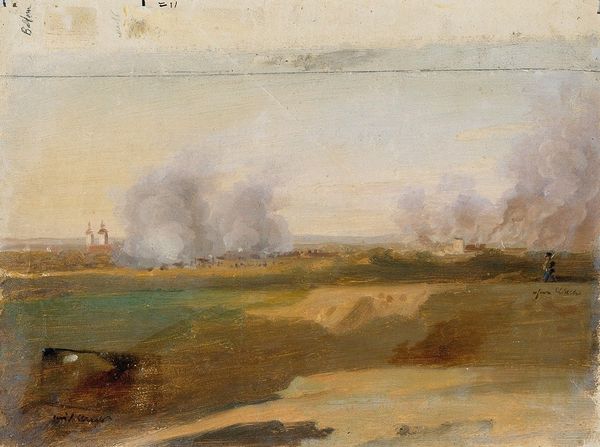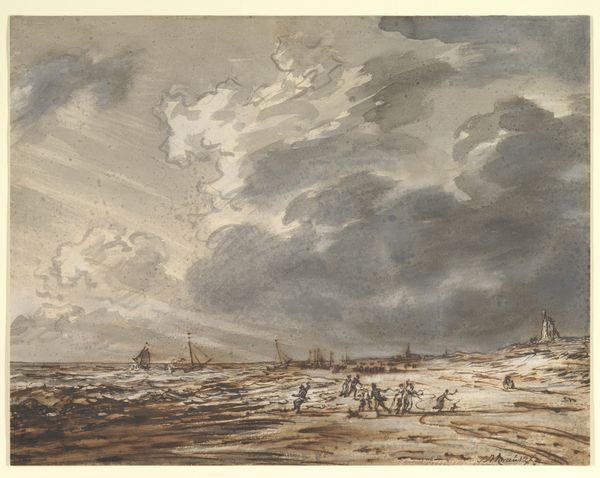
Dimensions: support: 128 x 177 mm
Copyright: CC-BY-NC-ND 4.0 DEED, Photo: Tate
Curator: Clarkson Stanfield's watercolor, "An Eruption of Mount Vesuvius," certainly captures a dramatic moment. Editor: The overall effect is ominous, isn't it? The looming darkness seems to swallow everything below. Curator: Absolutely. The watercolor medium itself allows for this hazy, almost apocalyptic depiction. Think about the availability of these materials—watercolor paints, paper—and how they democratized landscape painting, making sublime spectacles accessible to a wider audience. Editor: And Vesuvius, then as now, is a powerful symbol. Eruptions carry immense symbolic weight – destruction, purification, the unpredictable power of nature itself. It is a cultural memento mori. Curator: It's fascinating how the availability and portability of materials changed not only who could make art, but what kind of subjects they could represent and circulate. Editor: Yes, seeing it this way adds another layer of meaning. Perhaps not just the depiction of disaster, but also a reflection on what we choose to witness and commemorate.
Comments
tate 8 months ago
⋮
http://www.tate.org.uk/art/artworks/stanfield-an-eruption-of-mount-vesuvius-t08222
Join the conversation
Join millions of artists and users on Artera today and experience the ultimate creative platform.
tate 8 months ago
⋮
Stanfield was a versatile and prolific painter of landscapes and marines. He began his artistic career as a scene-painter in the theatre, and then established himself as one of the leading painters of the age. During the 1830s he frequently travelled on the Continent and made many paintings and illustrations of European scenery. Mount Vesuvius, near the shore of the Bay of Naples, is the only active volcano on the European mainland. It had long been a favourite tourist site. Gallery label, September 2004
